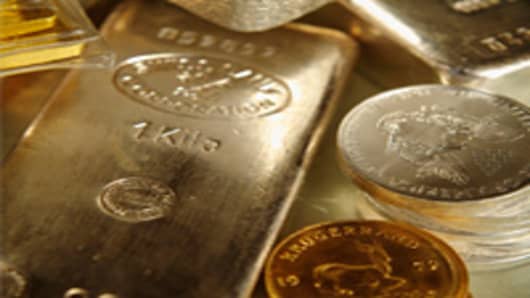China’s gold imports from Hong Kong, a proxy for overseas buying, set a record in November for the fifth consecutive month as demand from the world’s largest gold consumer continued to defy expectations.
China’s gold imports have soared in recent months, as Chinese investors pour their savings into popular gold bars and consumers start to buy gold gifts for Chinese New Year.
China’s gold imports via Hong Kong in November were leapt 20 per cent from the previous month to 103 tonnes . Thursday’s data, released by Hong Kong, brought China’s total gold imports from the territory to 389 tonnes during the first 11 months of 2011. The Hong Kong data are considered a proxy for China’s overall gold imports, which Beijing does not disclose.
“The weaker prices have been seen as a clear buy signal by many, with jewellery consumption and investment demand returning strong gains in the final quarter,” Cameron Alexander, senior metals analyst at consultancy GFMS, said. “The lower prices coincide with the important stocking period in the lead-up to the Chinese New Year celebrations, with reports from the trade of robust sales at current price levels.”
The run-up to Chinese New Year, which this year falls in late January, is the busiest time for gold purchasing in China, and November’s imports fall at the beginning of the holiday gold rush. Dragon-embossed gold bars and dragon figurines are particularly popular in Chinese gold shops this year as consumers prepare to welcome the year of the dragon under the Chinese zodiac.
Analysts said that the gravity-defying growth in Chinese gold imports in recent months reflected strong demand from retail investors eager to take advantage of bullion prices that have fallen from their August peak.
However, some traders cautioned that they had seen a slowdown in buying in December due to global economic uncertainties at year-end while other analysts expressed surprise at the numbers. “Perhaps it is worth highlighting here the lack of full transparency in this market, which makes it difficult to get a clear picture of the distribution channels and ascertain who is behind the buying at this stage,” said Edel Tully, precious metals strategist at UBS, a leading bullion dealer.
Gold was trading at $1,636.29 a troy ounce on Wednesday up from recent lows of $1,521.94 at the end of December last year.
China’s gold demand has surged over the past year as domestic investors, facing limited investment options, have turned to gold as a hedge against inflation. But with inflationary pressures now easing, analysts and traders are watching closely for any cooling in investors’ appetite for bullion.
Although China is the world’s biggest gold producer, mining 291 tonnes in the first ten months last year, the country’s ageing gold mines have failed to keep pace with demand, forcing imports to rise.
Unlike the west, the majority of China’s gold demand is from individual consumers buying gold bars or jewellery, and China’s institutional investment in the metal is relatively low. One important exception is China’s central bank, which disclosed in 2009 that it held 34m ounces of gold.
A key adviser to China’s central bank recently called on China to increase its gold holdings and diversify its foreign exchange reserves, describing gold as “the only safe haven for risk-averse investors.”
Analysts have suggested that another factor in the rising imports could be gold smuggling from China into Vietnam, though they cautioned that the volumes involved were likely to be small. In Vietnam, which shares a long, porous land border with China, gold typically trades at a premium to international prices because of government controls on bullion sales.


